|
Books Should Be Free Loyal Books Free Public Domain Audiobooks & eBook Downloads |
|
|
Books Should Be Free Loyal Books Free Public Domain Audiobooks & eBook Downloads |
|
Top Authors |
|---|
|
Book type:
Sort by:
|
By: Rebecca Harding Davis (1831-1910) | |
|---|---|
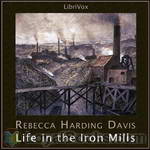 Life in the Iron Mills
Life in the Iron Mills
This 1861 novella was the first published work by Rebecca Harding Davis: writer, social reformer, and pioneer of literary realism. It tells the story of Hugh Wolfe, a Welsh laborer in an iron mill who is also a talented sculptor, and of Deborah, the hunchbacked woman who unrequitedly loves him. | |
By: F. Marion Crawford | |
|---|---|
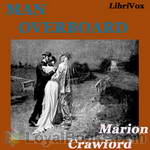 Man Overboard
Man Overboard
Peculiar happenings aboard the schooner Helen B. Jackson when one night during a storm, the small crew found themselves diminished by one. Somebody had gone overboard, and it was surmised that it was one of the twin Benton brothers. But oddly enough, it seemed that the ‘presence’ of the missing twin continued to exist on board during the following weeks. For example, one extra set of silverware was found to be used after each meal, but nobody claimed to be using them. What then did happen that stormy night, and which brother, if indeed it was one of the brothers, was the man who went overboard? | |
By: Lady Dorothy (Stanley) Tennant (1855-1926) | |
|---|---|
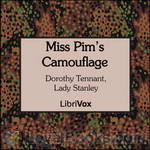 Miss Pim's Camouflage
Miss Pim's Camouflage
Mid-WWI, staid Englishwoman Miss Perdita Pim suffers a sunstroke gardening & gains the power of invisibility. She becomes a super-secret agent, going behind German lines, sometimes visible, sometimes not, witnessing atrocities & gleaning valuable war information. | |
By: Daniel A. Lord (1888-1955) | |
|---|---|
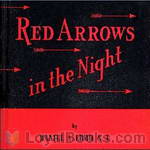 Red Arrows in the Night
Red Arrows in the Night
The Scarlet Archer of Agincourt is claimed by the Erkenwold’s as their family ghost. Tradition held that the death of an important Erkenwold was always heralded by the apparition of the Scarlet Archer. Now in the early years of WWII, the archer has made an appearance on the family estate on the US coast. Is it a ghost or something more sinister, and what does he or she want?This mystery novel was written by Daniel A Lord, S.J., who was a popular American Catholic writer. The subjects of the works in his bibliography range from religion, humor, plays, songs, mysteries and even politics... | |
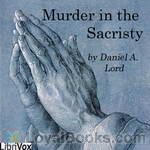 Murder in the Sacristy
Murder in the Sacristy
A sacristan is found murdered in the sacristy and the safe robbed of valuable jewels. All clues seem to point to the priest as the murderer. But is the priest the guilty party - or is it the communist - the nazi - the Senator's wife - or someone else?This mystery novel, set in World War II Chicago, was written by Daniel A Lord, S.J., who was a priest and popular American Catholic writer. The subjects of the works in his bibliography range from religion, humor, plays, songs, mysteries and even politics. His most influential work was possibly in drafting the 1930 Production Code for motion pictures. (Introduction by Maria Therese) | |
By: Woods Hutchinson | |
|---|---|
 A Handbook of Health
A Handbook of Health
The Woods Hutchinson Health Series, A HANDBOOK OF HEALTHBy Woods Hutchinson, A. M., M. D. PREFACE Looking upon the human body from the physical point of view as the most perfect, most ingeniously economical, and most beautiful of living machines, the author has attempted to write a little handbook of practical instruction for the running of it. And seeing that, like other machines, it derives the whole of its energy from its fuel, the subject of foods--their properties, uses, and methods of preparation--has been gone into with unusual care... | |
 The Child's Day
The Child's Day
The Child's Day, The Woods Hutchinson Health SeriesBy Woods Hutchinson, A.M., M.D. FOREWORD If youth only knew, if old age only could! lamented the philosopher. What is the use, say some, of putting ideas about disease into children's heads and making them fussy about their health and anxious before their time? Precisely because ideas about disease are far less hurtful than disease itself, and because the period for richest returns from sensible living is childhood--and the earlier the better. It is abundantly worth while to teach a child how to protect his health and build up his strength; too many of us only begin to take thought of our health when it is too late to do us much good... | |
By: Edward Streeter (1891-1976) | |
|---|---|
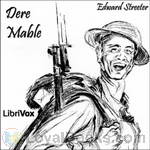 Dere Mable
Dere Mable
Bill is in training camp, preparing to go off to World War I. This book is a collection of love letters written to his sweetheart, Mable. The letters are humorous, mis-spelled, and have many stories of life in an army camp – all from Bill’s unique perspective. | |
By: Mamie Dickens (1838-1896) | |
|---|---|
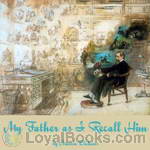 My Father As I Recall Him
My Father As I Recall Him
“If, in these pages, written in remembrance of my father, I should tell you, my dear friends, nothing new of him, I can, at least, promise you that what I shall tell will be told faithfully, if simply, and perhaps there may be some things not familiar to you.” So begins chapter one of My Father as I Recall Him, the personal recollections of Mary Dickens, (Mamie, as she was called), the oldest daughter of the great novelist, Charles Dickens. | |
By: Gaius Sallustius Crispus (Sallust) (86-34 BC) | |
|---|---|
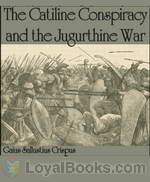 The Catiline Conspiracy and the Jugurthine War
The Catiline Conspiracy and the Jugurthine War
The Catiline Conspiracy and The Jugurthine War are the two separate surviving works of the historian commonly known as “Sallust”. Nearly contemporary to the events he describes, he is supposed to have been a retired officer of Caesar’s army. “Catiline” contains the history of the memorable year 63. Sallust describes Catiline as the deliberate foe of law, order and morality (although party politics may have influenced his view). Still, Sallust does recount Catiline’s noble traits, including his courage in the final battle... | |
By: Oliver Wendell Holmes | |
|---|---|
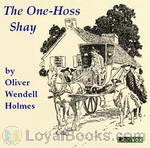 The One-Hoss Shay
The One-Hoss Shay
This is a small collection of whimsical poems by the American physician and author Oliver Wendell Holmes, Sr. "The Deacon's Masterpiece" describes the "logical" outcome of building an object (in this case, a two-wheeled carriage called a shay) that has no weak points. The economic term "one hoss shay," referring to a certain model of depreciation, derives its name from this poem. "How the Old Horse Won the Bet" is a lighthearted look at a horse race. Finally, "The Broomstick Train" is a wonderfully Halloween-y explanation of how an electric tram really works. | |
By: Oliver Wendell Holmes, Sr. (1809-1894) | |
|---|---|
 My Hunt After 'The Captain'
My Hunt After 'The Captain'
Holmes describes his frantic search through Civil War torn landscapes for his wounded son, the future Supreme Court Justice. Originally published in The Atlantic Magazine, 1862. Holmes, Sr. (1809 -1894) was an American physician, poet, professor, lecturer, and author. He was regarded by his peers as one of the best writers of the 19th century. His most famous prose works are the "Breakfast Table" series, which began with The Autocrat of the Breakfast Table (1858). He is also recognized as an important medical reformer. | |
By: Harry Leon Wilson (1867-1939) | |
|---|---|
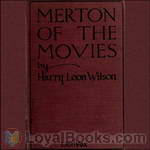 Merton of the Movies
Merton of the Movies
Merton of the Movies is a comedy that centers around Merton Gill, an aspiring dramatic artist from Simsbury, Illinois who makes his way to Hollywood to become a serious actor. How could Merton fail in attaining his dreams after finishing a correspondence course from the General Film Production Company of Stebbinsville, Arkansas, certifying him to be a competent screen actor? Harry Leon Wilson, the author, was a very popular humor writer in the first decades of the 20th century. This book was made into film several times, the last in 1947 starring Red Skelton. | |
By: Frederick Litchfield | |
|---|---|
 Illustrated History of Furniture
Illustrated History of Furniture
From the Earliest to the Present TimeBy Frederick Litchfield.PREFACE.In the following pages the Author has placed before the reader an account of the changes in the design of Decorative Furniture and Woodwork, from the earliest period of which we have any reliable or certain record until the present time. A careful selection of illustrations has been made from examples of established authenticity, the majority of which are to be seen, either in the Museums to which reference is made, or by permission of the owners; and the representations of the different interiors will convey an idea of the character and disposition of the furniture of the periods to which they refer... | |
By: Samuel Smiles (1812-1904) | |
|---|---|
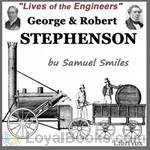 Lives of the Engineers (George and Robert Stephenson)
Lives of the Engineers (George and Robert Stephenson)
George Stephenson did not invent the steam engine, that was due to Newcomen and later to James Watt. He did not invent the steam locomotive, that was due to a number of people including Cugnot, Trevithick and others. He did not invent the Railway. Railways or tramways had been in use for two hundred years before Stephenson.The reason why Stephenson was known as ‘The father of the steam locomotive’ was that he took a primitive, unreliable and wholly uneconomic device and turning it into an efficient... | |
By: Robert W. Chambers (1865-1933) | |
|---|---|
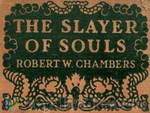 Slayer of Souls
Slayer of Souls
Tressa Norne is an American living in China. After her life was spared during a revolution in the area, Tressa finds herself taken as a slave and forced to serve Erlik, a demon-god, and his cult. She ends up escaping back to America, but only to find that she is being followed by the Secret Service, and her former masters. (Ann Boulais) | |
By: Elinore Pruitt Stewart (1878-1933) | |
|---|---|
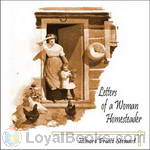 Letters of a Woman Homesteader
Letters of a Woman Homesteader
The writer of the following letters is a young woman who lost her husband in a railroad accident and went to Denver to seek support for herself and her two-year-old daughter, Jerrine. Turning her hand to the nearest work, she went out by the day as house-cleaner and laundress. Later, seeking to better herself, she accepted employment as a housekeeper for a well-to-do Scotch cattle-man, Mr. Stewart, who had taken up a quarter-section in Wyoming. The letters, written through several years to a former employer in Denver, tell the story of her new life in the new country... | |
 Letters on an Elk Hunt
Letters on an Elk Hunt
This is a sequel to Letters of a Woman Homesteader in which Elinore Rupert (Pruitt) Stewart describes her arrival and early years on a Burntfork Wyoming ranch in 1909-1913. The letters are written to her elderly friend, Mrs. Coney, in Denver. In the present collection of letters, Elinore describes a lively excursion on horseback and wagon into the Wyoming wilderness during July-October 1914. Her traveling companions are her husband “Mr. Stewart,” their three oldest children, and kind-hearted, opinionated neighbor Mrs... | |
By: Robert Falcon Scott (1868-1912) | |
|---|---|
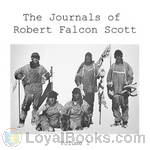 The Journals of Robert Falcon Scott
The Journals of Robert Falcon Scott
Capt. Robert F. Scott's bid to be the leader of the first expedition to reach the South Pole is one of the most famous journeys of all time. What started as a scientific expedition turned out to be an unwilling race against a team lead by R. Admunsen to reach the Pole. The Norwegian flag already stood at the end of the trail when Scott's party reached their target. All the five men of the Scott expedition who took part in the last march to the Pole perished on their way back to safety. Robert F. Scott kept a journal throughout the journey, all the way to the tragic end, documenting all aspects of the expedition... | |
By: Horatio Nelson | |
|---|---|
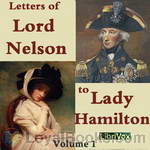 The Letters of Lord Nelson to Lady Hamilton
The Letters of Lord Nelson to Lady Hamilton
Horatio Nelson, 1st Viscount Nelson, 1st Duke of Bronté, KB (29 September 1758 – 21 October 1805) was an English flag officer famous for his service in the Royal Navy, particularly during the Napoleonic Wars. He won several victories, including the Battle of Trafalgar in 1805, during which he was killed. These are the letters that he wrote to Lady Hamilton, with whom he was having a notorious affair until his death in 1805. | |
By: Henry Adams (1838-1918) | |
|---|---|
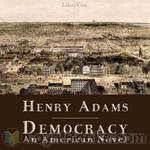 Democracy - An American Novel
Democracy - An American Novel
Not until after his death in 1918 was it revealed that Henry Adams was the anonymous author of Democracy, which had been published to great acclaim in 1880. Though the book avoids dates and the characters are fictitious, the setting is no doubt that of Washington in the 1870s, the age of Presidents Grant and Hayes. The young widow, Madeleine Lee, wealthy and independent, is the protagonist, who leaves her New York for Washington to turn her intelligence to politics and to see what makes her country tick... | |
By: Louis Tracy (1863-1928) | |
|---|---|
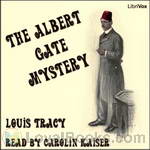 The Albert Gate Mystery
The Albert Gate Mystery
A new case for barrister and hobby detective Reginald Brett: The imperial diamonds were sent by the Sultan to London, to be cut in Albert Gate mansion by experts, all the while under the especial protection of the British government. One morning, however, the Turkish officials are found dead in the house, and the diamonds have vanished - despite the strict measures taken to protect them. The first suspicion falls on Jack Talbot, a young secretary at the Foreign Office, in whose charge this mission was, because he also disappeared without a trace on the same evening. Convinced that Talbot is innocent, his friend Lord Fairholme turns to Reginald Brett for help... | |
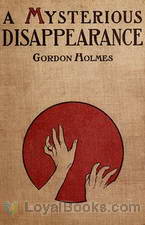 A Mysterious Disappearance
A Mysterious Disappearance
Lady Dyke disappears mysteriously, and barrister and hobby detective Claude Bruce appears to be one of the last persons to have seen her. A short time later a dead body is found in the river, and Bruce follows the trails. Who is Sydney H. Corbett? Why did the Lady's maid disappear shortly after her Lady? And what business did Lady Dyke have at Sloane Square? If Bruce can find the answer to these questions, he will find the solution to the mystery. (Introduction by Carolin) | |
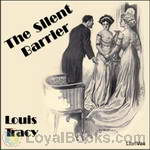 The Silent Barrier
The Silent Barrier
The Silent Barrier is a story of mystery and romance with Charles K. Spencer, a well-to-do young American mining engineer, as main character. Drinking his water in a hotel in London one day, he overhears a conversation between two young women, one of whom speaks of going to Switzerland. He decides to play "fairy godfather" and send the comparatively poor, but most amicable other girl there, without her knowing anything of him, under the pretext of furthering her career as a writer for a scientific journal. However, the girl is shadowed on her journey by the mysterious Mr. Mark Bower. Convinced from the first that Bower is a rogue, Mr. Spencer decides to follow them to protect the girl... | |
 Postmaster's Daughter
Postmaster's Daughter
A charming mystery story set in the early 1900s which is as much about the townspeople, sleuths and other colorful characters as it is about the murder. Filled with comic antics of Scotland Yard fellows, local police, and residents of the town, keeps the murder ever elusive. The "whodunit" is maintained until the very end and the laughter keeps going even after the mystery is solved. | |
 Stowmarket Mystery, or, a Legacy of Hate
Stowmarket Mystery, or, a Legacy of Hate
Another case for Reginald Brett, barrister and hobby detective: David Hume-Frazer is in some trouble. He was the prime suspect in the murder case of his cousin, Alan. Though he was never convicted, suspicion clings to him, and he wishes his name to be cleared before he marries his fiancé, Helen Layton. The case is baffling: Alan was murdered with a Japanese knife on his own grounds, in front of the library windows -- in the same place, where four of his ancestors already died "in their boots"... | |
By: Oliver Onions (1873-1961) | |
|---|---|
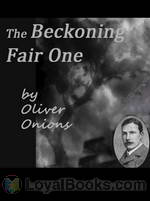 The Beckoning Fair One
The Beckoning Fair One
A classic ghost story of a haunted house, and the haunted man who lives in it. | |
 Widdershins
Widdershins
Onions wrote several collections of ghost stories, of which the best known is Widdershins (1911). It includes the novella The Beckoning Fair One, widely regarded as one of the best in the genre of horror fiction, especially psychological horror. On the surface, this is a conventional haunted house story: an unsuccessful writer moves into rooms in an otherwise empty house, in the hope that isolation will help his failing creativity. His sensitivity and imagination are enhanced by his seclusion, but his art, his only friend and his sanity are all destroyed in the process... | |
By: Georg Ebers (1837-1898) | |
|---|---|
 Arachne
Arachne
Ledscha, living in ancient Egypt, has lost her betrothed and all hope of love. But the gods see otherwise. She now loves a Greek sculptor, who only wanted her for a model, but even that will not happen. She has been replaced by another woman for the statue of Arachne. Who do the gods see her with? Is it the Greek, or someone else? This work is the last written and published in German by Georg Ebers before he died in 1898. He wrote many novels set it ancient Egypt, which sparked the general interest in and popularity of Egyptology that still thrives today. This book was translated into English also in 1898. | |
 Joshua
Joshua
Hosea is a commander in Pharaoh's army... and a Hebrew. As he returns home from war, he finds that there has been a great pestilence in Egypt and his people are being blamed for it. Hosea receives a message from his father to follow his people to Succoth, but he is hesitant to give up his position in the army. Someone else also sends a message, containing a new name for him from God. There is much intrigue in this retelling of the Exodus, both among the Hebrews and in the court of Pharaoh. | |
By: Baron Ludvig Holberg (1684-1754) | |
|---|---|
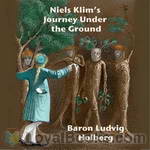 Niels Klim's Journey Under the Ground
Niels Klim's Journey Under the Ground
Niels Klim’s Underground Travels, originally published in Latin as “Nicolai Klimii Iter Subterraneum” (1741) is a satirical science-fiction/fantasy novel written by Ludvig Holberg, a Norwegian-Danish dramatist, historian, and essayist, born in Bergen, Norway. It was his first and only novel. It describes a utopian society from an outsider’s point of view, and often pokes fun at diverse cultural and social topics such as moral, science, sexual equality, religion, governments, and philosophy. | |
By: Novalis | |
|---|---|
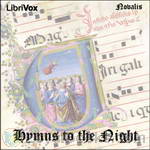 Hymns to the Night
Hymns to the Night
“Hymns to the Night” is the last published work of Georg Philipp Friedrich Freiherr von Hardenberg (1772-1801), the German philosopher and early Romantic poet whose pen name was simply “Novalis”. The work alternates poetry and prose, exploring a personal mythology of darkness and light, but it is also a free-associative chronicle of a young man rationalizing the untimely death of his fiancé. This version (1897) was translated by influential fantasy author and novelist George MacDonald, who cited it as a great – and early – inspiration. | |